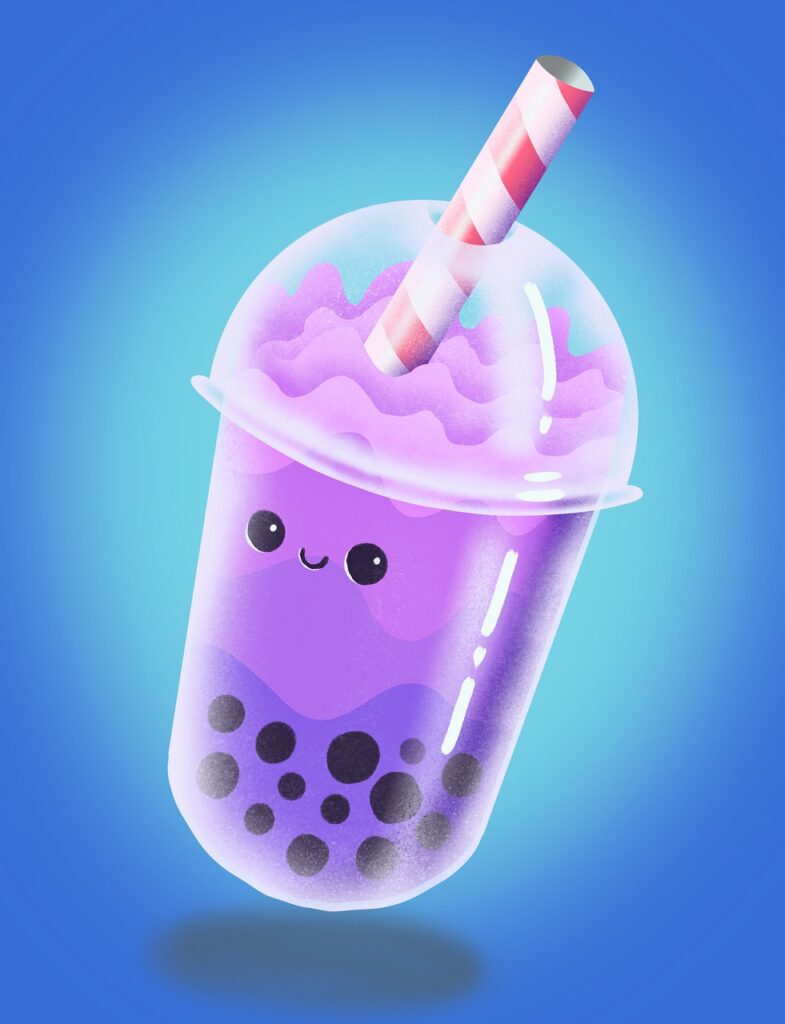The Art of Making Boba Milk Tea
In this article, we explore the intricate process behind the creation of boba milk tea, a popular and beloved beverage that has taken the world by storm. From the selection of the finest tea leaves to the delicate pearls bursting with flavor, we delve into the artistry involved in crafting this exquisite drink. With a focus on the meticulous preparation and presentation, we unravel the secrets and techniques that transform a simple cup of tea into a transcendent sensory experience. Join us on this journey as we unravel the art of making boba milk tea, a true masterpiece in the world of beverages.

Choosing the Right Ingredients
Selecting the Tea Leaves
When it comes to making a delicious cup of boba milk tea, the choice of tea leaves plays a crucial role in achieving the perfect flavor profile. Opt for loose-leaf tea instead of tea bags, as loose-leaf tea allows for better infusion and results in a richer taste. Some popular options for boba milk tea include black tea, green tea, oolong tea, and jasmine tea. Experimenting with different tea varieties can help you find the perfect one for your taste preferences.
Choosing the Boba Pearls
Boba pearls, also known as tapioca pearls, are an essential component of boba milk tea. These chewy, tapioca-based pearls add a unique texture to the drink. When selecting boba pearls, it’s important to consider their size and cooking time. Smaller boba pearls cook faster and are ideal for drinks with a shorter preparation time. On the other hand, larger boba pearls take longer to cook but provide a more satisfying chew. Choose the size that best suits your preference and allows for a harmonious balance with the other ingredients.
Picking the Right Milk
The choice of milk greatly affects the overall taste and creaminess of boba milk tea. Common options for milk include whole milk, skim milk, soy milk, almond milk, and coconut milk. Whole milk tends to provide a rich and creamy texture, while skim milk offers a lighter option. Non-dairy alternatives like soy milk, almond milk, and coconut milk are preferred by those who are lactose intolerant or prefer a plant-based diet. Consider personal taste preferences and dietary restrictions when selecting the milk for your boba milk tea.
Preparing the Tea
Boiling the Water
To start the process of making boba milk tea, it is essential to boil water. Use filtered or fresh water to ensure the best flavor. Bring the water to a rolling boil in a saucepan or kettle. Boiling water is necessary to extract the flavors from the tea leaves and create a strong base for the beverage.
Steeping the Tea Leaves
Once the water has reached a boil, remove it from the heat source and add in the desired amount of tea leaves. The amount of tea leaves used will depend on personal preference and the desired strength of the tea. Allow the tea leaves to steep for the recommended time, usually around 3-5 minutes. Be sure not to oversteep the tea, as it can result in a bitter taste.
Sweetening the Tea
After steeping the tea leaves, it’s time to sweeten the tea to taste. Sweetening options include sugar, honey, simple syrup, or any preferred sweetener. Start with a small amount of sweetener and gradually adjust according to personal preference. Remember that the boba pearls will also add sweetness to the overall drink, so take that into consideration when sweetening the tea.
Cooking the Boba Pearls
Boiling the Water
To cook the boba pearls, start by boiling a pot of water. The amount of water used should be approximately four times the volume of the boba pearls. Bring the water to a vigorous boil, ensuring that there is enough space for the pearls to move freely.
Adding the Pearls
Once the water is boiling, carefully add the boba pearls to the pot. Stir gently to prevent the pearls from sticking together. Cook the pearls according to the instructions on the packaging, but typically they need to cook for about 10-15 minutes. Stir occasionally to ensure they cook evenly.
Cooking Time
During the cooking process, keep a close eye on the boba pearls to determine their doneness. The pearls should be soft and chewy, with no hardness in the center. Overcooking can result in mushy pearls, while undercooking may make them too firm and unappetizing. Once cooked to the desired consistency, remove the pot from heat and let the pearls sit for a few minutes before straining.
Prepping the Milk
Choosing the Milk Type
Deciding on the milk type depends on personal preference and dietary restrictions. If you prefer a traditional boba milk tea, whole milk is the go-to choice for a creamy and indulgent flavor. However, if you are looking for a healthier alternative or have dietary restrictions, non-dairy milk options like soy milk, almond milk, or coconut milk can provide a delicious twist to your boba milk tea.
Heating the Milk
In a separate saucepan, heat the chosen milk over medium-low heat. Stir gently to prevent scorching or boiling over. Heating the milk helps to incorporate it seamlessly into the final drink and enhances its overall creaminess.
Frothing the Milk
For those who enjoy a frothy texture in their boba milk tea, a handheld milk frother or steam wand can be used to froth the warmed milk. This step is optional but adds a delightful visual and textural element to the drink. Simply immerse the frother or steam wand into the milk and create a gentle whirlpool motion to froth it to your desired level of foaminess.

Assembling the Boba Milk Tea
Putting the Boba Pearls in the Cup
Start assembling the boba milk tea by adding a generous serving of cooked boba pearls to the bottom of a glass or cup. The amount of pearls can be adjusted based on personal preference.
Pouring the Tea
Next, carefully pour the prepared tea over the boba pearls, filling the glass a little over halfway full. The tea should cover the pearls completely while leaving room for the addition of milk and sweetener.
Adding Milk and Sweetener
Finish assembling the boba milk tea by pouring in the heated milk, allowing it to blend with the tea and boba pearls. Add sweetener to taste, considering the sweetness of both the tea and pearls. Stir gently to mix all the ingredients together and dissolve any sweetener added. Adjust the proportions of tea, milk, and sweetener according to personal preference.
Variations and Additions
Adding Fruit or Flavor Syrups
For those who enjoy a burst of fruity flavor in their boba milk tea, consider adding fruit or flavor syrups. These syrups can range from classics like strawberry, mango, or passion fruit to more unique flavors like lychee or taro. Add a splash of your chosen syrup to the tea before assembling the drink for an extra dimension of taste.
Blending the Tea
For a twist on the traditional boba milk tea, consider blending the prepared tea with ice for a refreshing and cool texture. This turns the drink into a boba milk tea smoothie, perfect for warm summer days.
Using Non-Dairy Milk
To cater to lactose intolerant individuals or those following a plant-based diet, replace dairy milk with non-dairy alternatives. Soy milk, almond milk, and coconut milk can be used as a substitute for traditional milk, providing a unique and delicious flavor profile.

Serving and Presentation
Choosing the Right Glass
Presentation plays a significant role in the enjoyment of boba milk tea. Select a glass or cup that allows the visually appealing layers of boba, tea, and milk to shine. Transparent or translucent cups are often preferred to showcase the beauty of the drink.
Garnishing the Drink
Elevate the aesthetic appeal of your boba milk tea by garnishing it with toppings such as fresh fruit slices, mint leaves, or even a sprinkle of matcha powder. These garnishes not only add visual flair but also impart complimentary flavors to the overall drink.
Serving Temperature
Boba milk tea can be enjoyed hot, warm, or cold, depending on personal preference. Serve immediately for a warm beverage or add ice cubes to chill the drink. Experiment with different serving temperatures to find the ideal one that suits your taste.
Storing and Shelf Life
Storing the Tea
If you have leftover tea, it can be stored in a sealed container in the refrigerator for up to 24 hours. Beyond that, the quality and flavor of the tea may deteriorate.
Storage Duration
Cooked boba pearls should be consumed within a few hours of preparation to maintain their texture and taste. These pearls are best enjoyed fresh. If not used immediately, store them in a small amount of simple syrup or sugar water to prevent them from becoming hard and dry.
Reheating and Reusing
When reheating boba milk tea, it is recommended to heat the milk and tea components separately. This helps to maintain the integrity of the boba pearls and prevents them from becoming overly soft. Reheat the milk gently over low heat and warm the tea separately before combining them again.

Tips and Tricks
Experimenting with Ratios
Finding the perfect ratios for boba milk tea can be a matter of personal preference. Adjust the ratios of tea, milk, and sweetener according to taste. Some prefer a stronger tea flavor, while others enjoy a more milk-forward drink. Take into consideration the size of the glass or cup being used and experiment with different combinations to achieve the desired balance of flavors.
Adjusting Sweetness Level
Remember that the sweetness of boba milk tea can come from both the tea and the pearls themselves. It is essential to taste and adjust the sweetness level accordingly. Start with a conservative amount of sweetener and gradually add more as desired. Consider the sweetness of the tea and pearls when making adjustments.
Using Specially Designed Tea Bags
If preparing loose-leaf tea seems inconvenient, consider using specially designed tea bags for boba milk tea. These tea bags are larger and have a more porous material, allowing for better infusion and flavor extraction. They offer a convenient alternative while still providing a similar taste experience to using loose-leaf tea.
Common Mistakes to Avoid
Overcooking the Boba Pearls
Overcooking boba pearls can result in a mushy texture that is unappetizing. It is important to follow the recommended cooking time provided with the pearls and periodically check for doneness. Removing the pearls from heat promptly once they achieve the desired softness is crucial to prevent overcooking.
Using Low-Quality Ingredients
To ensure a delightful boba milk tea experience, it is crucial to use high-quality ingredients. Opt for fresh tea leaves, quality boba pearls, and fresh milk or non-dairy alternatives. Using subpar ingredients can significantly impact the taste and overall enjoyment of the drink.
Forgetting to Adjust Ratios
The ratios of tea, milk, and sweetener are crucial in achieving a well-balanced boba milk tea. Forgetting to adjust these ratios to personal taste preferences can result in an imbalanced flavor profile. Take the time to taste and adjust the drink before finalizing the assembly to ensure a satisfying and enjoyable beverage.
By following these steps and tips, you can master the art of making delicious boba milk tea at home. With careful selection of ingredients, precise preparation techniques, and attention to detail, you can create a refreshing and indulgent beverage that is sure to satisfy your cravings. Cheers to the perfect cup of boba milk tea!


